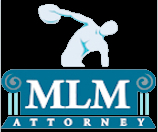Barry Minkow Charged With Securities Fraud
Ex-Con to Plead Guilty to Charges Alert Subscribers Knew About Four Years Ago
Anti-MLM critic and so called “fraud buster” Barry Minkow, who was convicted of securities fraud in connection to his ZZZZ Best carpet cleaning business in the 1980s and served over seven years in prison, was accused today of conspiring to commit securities fraud on (non-MLM) homebuilder Lennar Corporation. This follows an earlier charge of insider trading.
Federal prosecutors are accusing Minkow of spreading false information about Lennar using online press releases, emails to the media, online videos, and his own “Fraud Discovery Institute” website between January of 2009 and April of 2010. Prosecutors believe Minkow was trying to decrease Lennar’s stock price for his own personal gain, and to compel Lennar to pay a coconspirator which had previously lost a lawsuit against Lennar. The conspirator, believed to be real estate developer Nicolas Marsch, hired Minkow to beat up on Lennar allegedly to extort a cash payment from them.
According to court documents, Minkow’s statements “alleged widespread improprieties in Lennar’s financial reporting and business structure, and attacked the personal character of Lennar’s management,” with “reckless regard for their truth.”
Lennar’s stock dropped 19.9% percent after Minkow’s first Lennar report, which was followed by 12 more public hits on Lennar, either by way of a press release, new investigative reports, or online videos. Lennar’s stock dropped after 10 of the 13 total attacks possibly costing innocent Lennar shareholders over $861 million[1].
In an earlier and separate civil action Minkow was sued by Lennar for libel and extortion and was ordered by a Florida State Court judge to pay sanctions that could amount to “hundreds of millions of dollars” for a variety of acts designed to fool or mislead the court. You can read more about this action here:
http://blogs.laweekly.com/informer/2010/12/barry_minkow_destroys_evidence.php
The actual order can be viewed here:
http://www.marketwaveinc.com/docs/minkowlennarsanctions.pdf
This new federal charge is a criminal action that could send Minkow back to prison for up to five years. You can read a recent news report about this action here:
WSJ: http://tinyurl.com/WSJMinkow
Bloomberg (video): http://www.bloomberg.com/video/67984062/
Minkow has recently resigned as lead pastor for the San Diego based Community Bible Church. The church’s website states Minkow “has informed the church that he will plead guilty to one criminal count related to a lawsuit with which he was associated”.
Commentary:
Barry Minkow and his “Fraud Discovery Institute” began attacking M.L.M. companies in March of 2007. You can read the whole story in the comments section of Alert #165. Basically Minkow would hire uber-anti-MLM critics Robert FitzPatrick and Tracy Coenen to help him create smear campaigns against public M.L.M. companies which he would take short positions in (he purchased put options which allowed him to profit by the company’s stock going down). His tactic would be to do exactly what federal prosecutors are now accusing him of doing with Lennar. That is, use his media bestowed credibility to trash publicly traded companies so he could make money when their stock would go down. He’d accomplish this by making false statements about the company’s legality, ethics and financial viability. In some cases, such as his attack on Usana Health Sciences, Minkow was also paid by other short sellers so they could profit from the stock drop, too. In Usana’s case Minkow was paid $200,000[2] by fellow stock-fraud felon Sam Antar and another $50,000 by two hedge fund managers.
Of course, MarketWave Alert subscribers knew of Minkow’s bash-n-cash scheme four years ago. You can read my various rebuttals to Minkow’s M.L.M. company attacks HERE (see the documents listed in red).
What’s most sad about this is that the over $2.8 billion in total losses Minkow may have caused the innocent shareholders of his victims[3] might have been avoided had the mainstream media taken these rebuttals seriously rather than ignoring them. Instead, they kept on promoting Minkow as a credible, reformed scam buster. In fact, the Wall Street Journal would routinely report on Minkow’s attacks, giving them that much more credibility. After Minkow first turned his crosshairs on public M.L.M. companies with his Usana hit piece I contacted the WSJ reporter who was, at least inadvertently, supporting Minkow’s attacks. I made him aware of all the evidence I had that Minkow and his cohorts, FitzPatrick and Coenen, were unjustly attacking this and other companies based on bogus information. It was not until about a year later, after a Minkow induced SEC investigation of Usana and three separate class action lawsuits (one shareholder, one derivative, and one distributor) were all dropped with no finding of wrongdoing on Usana’s part[4], that this writer confided in me that he had only just then went back to read my rebuttals and “really wished I had read them back when you first sent them”. His supportive Minkow article he claimed he was working on never appeared in The Wall Street Journal, and he never wrote about any of Minkow’s attacks again.
Even more evidence that Minkow is still not telling the truth occurred during an interview with a local ABC news affiliate in San Diego last February. According to the 10News.com article, Minkow claimed “We had 24 cases, 23 led to convictions” and that the Lennar case was “number 24”. I guess Barry’s now infamous selective memory must have been engaged during this interview, and he just forgot about Usana. Or Herbalife. Or Prepaid Legal. Or Medifast. Or, for that matter, the non-MLM company InterOil (IOC) that he shorted and trashed. Not only did none of these cases involve any “convictions”, Minkow failed to get any legal authority to take any action against any of these companies of any kind! He just shorted them, bashed them, then cashed out.
It’s also interesting to note how Tracy Coenen unconditionally and obligatorily repeated, supported and defended each and every one of Minkow’s accusations against Lennar (as she did with Usana, Herbalife, Medifast, and others), going so far as to declare that their CEO “blatantly lied”, Lennar exhibited a “pattern of fraud and deception”, and Lennar was perpetrating a “giant Ponzi scheme”. She even titled one of her blog entries “Being right feels so good” when she thought her and Barry had proven one of their many accusations. Tracy is usually quite the chatterbox when it comes to defending her position and credibility, yet she doesn’t seem to have anything to say about Lennar right now (she’s removed all of her many blog posts about them, but I have copies). She also doesn’t seem too keen on defending Barry anymore. She hasn’t offered a word of support (and yes, Tracy, being right does feel good 🙂
It’s also odd that Minkow has left his FraudDiscovery.net website online in spite of the fact he hasn’t updated it since June 4th, 2010, and it still defiantly showcases both his Lennar and Medifast smear campaigns, including his supposedly upcoming Lennar documentary called “Two Big To Go To Jail: The Lennar Story“, and his own autobiographical movie. Yes, there is a movie about Minkow’s life, titled simply “Minkow” (which was originally to be called “Redemption”), staring Minkow playing himself along with a great cast, including James Caan, Mark Hamill, Ving Rhames, Talia Shire, and Justin Baldoni (as a young Minkow). It was due to be released sometime this Spring, but due to recent events the director has suggested the ending may need to be revised.
I hope they allow cameras in prison.
Len Clements
Founder & CEO
MarketWave, Inc.
[1] Based on an analysis of change in Lennar’s closing share price the day previous to the Minkow attack and the day of the attack, and factoring out the change in the overall market (based on S&P 500 index) during that same period.
[2] Minkow claims Antar only paid him $100,000 for his Usana report, and the other $100,000 Antar paid him, right about the time Minkow first began his Usana investigation, was simply a gift due to Antar’s “admiration” for Barry.
[3] Based on the analysis described in footnote #1.
[4] The SEC “informal inquiry” was dropped with no action taken, two lawsuits were dropped by the plaintiff, and another was dismissed on summary with the judge declaring that the claims made against Usana, most taken directly from Minkow’s material, were not even “plausible”.










